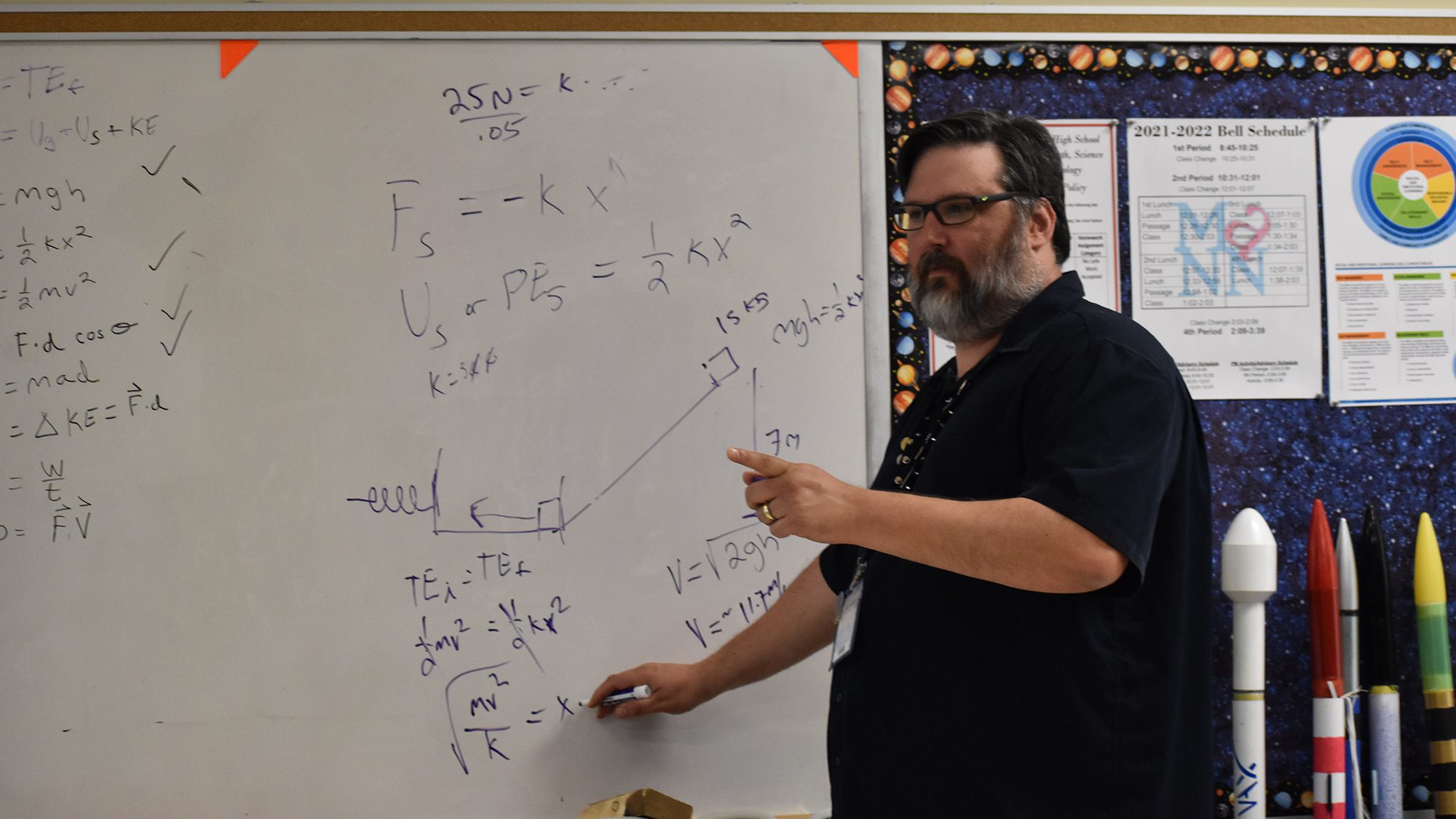In search of ‘young stellar object candidates’

A tiny piece of space that appears smaller than a marble to the naked eye can contain more than 10,000 stars, so mapping it is painstaking work.
But Bob Anderson ’18 and some of his students at JL Mann High School in Greenville have taken on the job as part of a research project led by NASA.
“We selected an object in space known as IC-417, also called the Spider Nebula,” said Anderson, who teaches physics and astronomy. “We are investigating this object to create a catalog of young stellar object candidates, potentially young stars.”
The project is part of a program known as the NASA/IPAC Teacher Archive Research Program. IPAC is the NASA Infrared Processing Center at Cal Tech.
Each year, teachers are selected to participate in research and present their work the following year at a conference of the American Astronomical Society, or what Anderson calls “the Super Bowl of Astronomy.”
“It’s a bunch of space nerds getting together and learning about what we’re doing,” said Anderson, who first got involved in 2019.
The research is “true cutting-edge science,” he said, and involves studying archived photos of space and working to identify and catalog the objects that appear there. It’s one step on the journey to a bigger question, he said, which is how stars form in the exterior of a galaxy.
“There are many stars that make up a galaxy – 1 billion to 10 trillion stars in any galaxy,” he said. “And there are billions and trillions of galaxies.”
By analyzing the light emitted by these objects across a broad spectrum of wave lengths, Anderson and his students can identify what they are.
Some can be immediately identified as something other than young stellar objects, he said. Others are previously identified stars or they could be galaxies, he said.
Of the more than 10,000 objects in the Spider Nebula, he and his students have created a catalog of about 500 objects as young stellar object candidates.
Because the objects are so far away – more than seven thousand light years – the light from them has been traveling for about 8,000 years, he said. So whether they still exist is a question astronomers love to ask.
“When we look into the night sky, we’re looking into the past,” Anderson said. “If (a star) would die violently right now, we wouldn’t find out about it for 8,000 years.”
But because stars live for millions to trillions of years, it’s more than likely those that he and his team are studying still exist, he said.
Anderson was an IT professional for 20 years before going back to college at the age of 40. At Furman, he was encouraged to pursue his passion for physics and his aptitude for teaching.
As a special NASA-certified teacher, Anderson, who graduated cum laude in 2018 with a physics degree, shares his research experiences with students and other teachers.
Under normal circumstances, he and his students would have spent a week at Cal Tech courtesy of NASA over the summer and presented their findings at an AAS conference, he said. But the COVID-19 pandemic canceled some gatherings while other work has been done via Zoom for the past two years, he said.
Even though their work has concluded, they are optimistic they can attend the next conference in June in Pasadena, California.
“We can’t wait for the opportunity to get out there and do that,” he said, adding that in the meantime, research into “the wonder and awe” of space continues.
“We will continue to push because what we know today is more than we knew yesterday,” said Anderson. “We will keep asking the questions.”